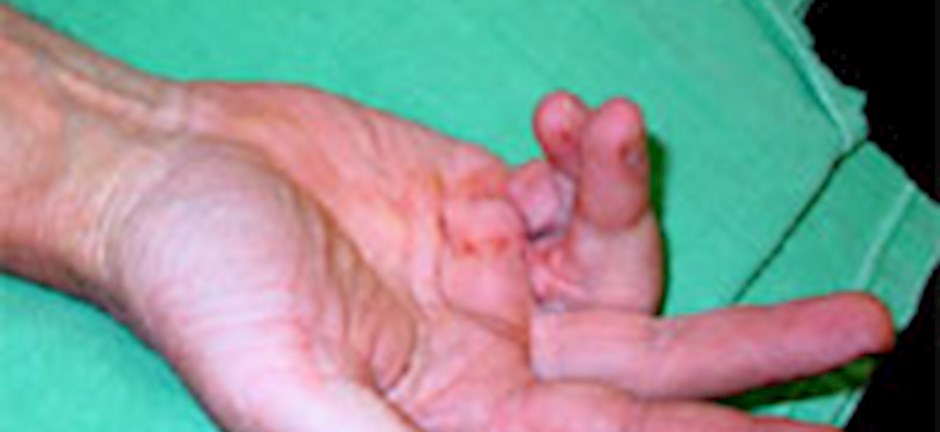
What is it?
Dupuytren’s Disease, originally named after Baron Guillaume Dupuytren, a French surgeon, is a disease affecting the hands and fingers. It causes the fingers to bend over and have the appearance that tight bands in the palm are pulling them. It is usually painless, but patients can describe discomfort around the small nodules which appear in the palm. It may take years for the changes to occur in the hand. Other times it may progress over months. There is a substantial variability in the progression of the disease between patients. Surgery is not usually required until the bend of the finger interferes with hand function. Nevertheless if there is s a lump in your hand or advice is needed it is worth asking.
Are there any non-operative treatments for Dupuytren’s Disease? Xiapex (SOBI) was licensed within the UK. It was also known as XIAFLEX (collagenase clostridium histolyticum) in the USA. International studies demonstrated encouraging results. However it was withdrawn around 2019, and is no longer available in Europe. Nevertheless needle fasciotomy is similar how this group of patients can be treated, and is less traumatic.
What do the operations involve?
The operations are usually day case procedures, which means you, can arrive and leave on the same day. Occasionally we would keep you in if you are the last on the operating list, or you live far away. The operations vary depending on the extent of your disease:
- A percutaneous fasciotomy, where a little anaesthetic is given and a small needle is used to cut the cord.
- Limited fascietomy, where only a small amount of tissue is removed through a smaller wound, a couple of centimetres long in the palm or finger. This is usually done with a full anaesthetic.
- A fasciectomy, where there is a zigzag wound from your palm to the middle of you finger. This is usually done with a full anaesthetic.
- A dermofasciectomy and skin graft, where the disease is extensive or recurrent and the skin is involved. Here there is a zigzag wound, but also a patch of skin is taken from your arm to fill a defect. This is usually done with a full anaesthetic.
What happens after the operation?
You would go home with your hand in a large bandage/ plaster and be given an appointment to see the hand therapist in the next few days. They would take off the big dressing and make a splint for you. You would also be given an appointment to see the consultant back in clinic at about 10-14 days to have the stitches taken out. You would usually have to wear a splint through the day for 6 weeks in total and up to 6 months at night.
More detailed information is available from the British Dupuytren Society.
More detailed information can be obtained from the NHS website: Dupuytren's Disease.
More detailed information also available from the International Dupuytren Society.
Patient Leaflet Download
Find A Surgeon
Find a surgeon in your area.
Consent Form
You can access the consent form using the button below.




